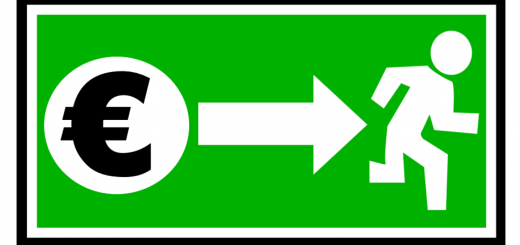Make income tax and profit taxation comparable!

Over time, tax law has grown into a stronghold with different routes and associated different tax rates and deductions. This means that inequality has crept into the system, which, according to Piketty, is also causing inequality in society to grow. Thomas Piketty provides an extensive analysis in his two books of how the difference between rich and poor is getting bigger and what the disadvantages are. This is largely due to the choices made in the tax system. Strangely enough, an employee pays a relatively high income tax on the income he generates, while a business owner pays relatively little profit and dividend tax on the profit he appropriates. In addition, a return that is made with a capital is taxed even less. So if you don’t need the money, capital growth will go faster than if you do something for it and try to achieve this with income growth. The latter may be a good topic for next time, but first have a look at what happens to a euro that is earned in a company and is paid to an employee or shareholder.
In my opinion, it should not matter through which route a euro arrives at a private person, the percentage of tax paid on it should be the same. This does not necessarily have to be a flat tax, as there is a thought behind it that a lower tax is levied on the first 70,000 euros. Within the current system in the Netherlands, in practice everyone has the right to this, creating a strongest shoulder system that protects the bottom. What matters to me is what happens up there. Each subsequent euro is now charged with either 49.5% income tax for employees, or 38.42% combined profit and dividend tax for a director major-shareholder (DGA) of a BV. There is actually no explanation to justify that. You may think: “But hasn’t he run more risk by doing business and is therefore entitled to more money?” Yes, that is true, but that is essentially a moral choice of who gets the money, not a choice of who should pay tax on it. The owner is free to give himself a relatively larger profit settlement and salary than he gives to his employees. Compare it with a difference in stocks and bonds. The greater the risk taken, the greater the return paid. However, I would also expect; the higher the absolute tax payment with resulting higher profit. What is the reason for the discount on the tax rate of the DGA or shareholder compared to the employee?
If everyone were to pay equal tax rates, the choice would naturally arise of having everyone pay the higher rate and allow the State a higher spending pattern, or increase the low rate and lower the high rate. Looking at the 2019 Millions Memorandum, the companies with corporate and dividend tax yield approximately 31 million in taxes. The income tax and premiums provide approximately 174 million. Both have about the same tax burden at the average and nominal level, so the ratio can be approximated as 15% by companies and 85% by employees. That suggests that a significant increase in the percentage of companies is needed to create a small cut for the employees.
More important than the DGAs that I have highlighted in this article are the shareholders who do not pay 26.25% dividend tax at all, but standard 15% dividend tax or pay even less than that through settlement. Just as important are the multinationals that do not pay 25% corporate tax at all, but are given countless deductions to structurally get them down to 0%.
If we all apply the same principle for all of them, namely: “everyone pays the same percentage of tax on their income in whatever form”, then there would suddenly be room to drastically reduce that percentage. The pros and cons of such a change seem worth a future article to me. Just like the benefits of even introducing a progressive rate for it, which I advocated earlier. The essence must be, if you have earned something from the Nederlands, then you give the same percentage to the State as the others who earned something from it. Paying a lot of tax thus gives the status of having a lot of earnings. Compare it with the income-related fine in Switzerland, with which you can show how much capital you have. So what is actually stopping us from making the Netherlands a bit more thorough?
Bonus
I can imagine that you do not know exactly how the different taxes are levied in the different situations in the Netherlands, so a short consideration below as a bonus. These remain summaries of the more complex calculations of situations with different income under the tax legislation of 2020. For the exact rates, I would like to refer you to the site of the tax authorities.
If we focus on tax charged to get a euro earned from a private individual, there are basically 3 different routes with different tax rates. Income tax, stocks and sole proprietorship. The highest is the income tax route, where the total tax, including health insurance, tax credits and work-related expenses scheme, runs from 32% with an income of 18,000 euros per year to 48% effectively with an income of 220,000 euros per year. Effective means the total tax paid divided by the total gross income to be paid. Someone who earns 220,000 euros pays 49.5% tax on every extra Euro above 220,000 euros, but that is on average just under 48% on all euros earned.
The lowest tax rate can be achieved by the owner of a company. In a BV 15% corporate tax must be paid. If this goes to a private person who has a substantial interest and therefore owns more than 5% of the shares, this will be increased via income tax to effectively 26.25% and, without this substantial interest, it will be reduced to 0%. In that case, instead of dividend tax, 30% tax is levied on an average return on this capital estimated by the tax authorities.
Before dividend can be paid, a profit must first be made. In principle, corporate tax of 16.5% below 200,000 euros and 25% above that is paid. Effectively, therefore, a minimum of 16.5% tax is paid on every euro of profit that is also distributed to a shareholder and, in the case of a substantial interest, a minimum of 38% (16.5% plus 26.25% on the remainder of 83.5%). maximum of 45% (25% plus 26.25% on the remainder of 75%).
The 45% applies to a profit distribution of more than 200,000 euros with a private person with a substantial interest and thus resembles the 48% of a comparable person with 200,000 euros income. But for that person it concerns the effective tax and here the incremental tax. Up to the 200,000 euros, 38% tax is effectively paid, which means that in reality much less tax is paid via the BV route. The theoretical turning point is already at 40,000 euros where both would effectively pay 38%. For an employee, it actually increases from there, while with the dividend payment it only increases from 200,000 euros. Ultimately, the two never come close to each other. The tax authorities are also aware of this difference and do not want to miss out on this money. That is why the tax authorities assume that a director major-shareholder (DGA) with his substantial interest must always pay a minimum salary to himself of 46,000 euros, or more than the highest-earning employee, or 75% of the usual wage in the market. In this way, a DGA is also ensured that the same tax is paid as for a comparable employee and that only the profit above has the lower rate.
The third route is a sole proprietorship. A sole proprietorship has the normal income tax plus a number of additional deductions and is therefore always more favorable than an employee. With low income it is effectively a 10% lower percentage, the higher the income the smaller the difference. The lower effective tax rate is essentially an incentive to become a self-employed person. The politicians are also aware of this and are therefore making a gradual adjustment to reduce these deductions and thus reduce the difference. The advantages of the sole proprietorship are also offset by disadvantages such as fewer options for insuring income against illness and unemployment. You could say that the additional deductions for sole proprietorships currently provide the opportunity to build up a pot for times of illness and times without assignments, so that the actual differences between employee and sole proprietorship are less distant.
If the extra costs of a BV are not taken into account, a sole proprietorship becomes less favorable than a BV from about 160,000 euros. At that point, both have about 39% effective taxes. Above that, the income tax of a sole proprietorship continues to add up, just as it does for an employee. However, the DGA will not be bothered by the increase in tax rates. In the event of a higher profit in a company, there is therefore a tax incentive to convert the sole proprietorship into a private limited company (BV). This creates the incentive tax route for anyone who can use it to first become a sole proprietorship and, where desirable, later a BV. If all taxes are equalized and self-employed people can insure themselves in the same way, then the tax/legal form in which services are offered to companies suddenly no longer matters. Given the advantages that all companies now have with the current rules with cheap flexible labor, it remains to be seen whether the politics will adjust anything.
But don’t fall into the trap of playing out the self-employed against the employee, the actual laughing third is the multinational.







4 reacties
[…] English version […]
[…] as retirement provision (AOW) and social assistance benefits. In addition, the strange situation that companies pay less tax than employees can be remedied. The profit that arises from a further automation of society is therefore also […]
[…] should therefore not exist for the tax authorities between companies and employees. As mentioned in this article, it should be quite normal that when money reaches an individual, the same effective tax is paid […]
[…] also indicated in the article on the difference between income tax and profit distribution, the inequality between wealthy and […]